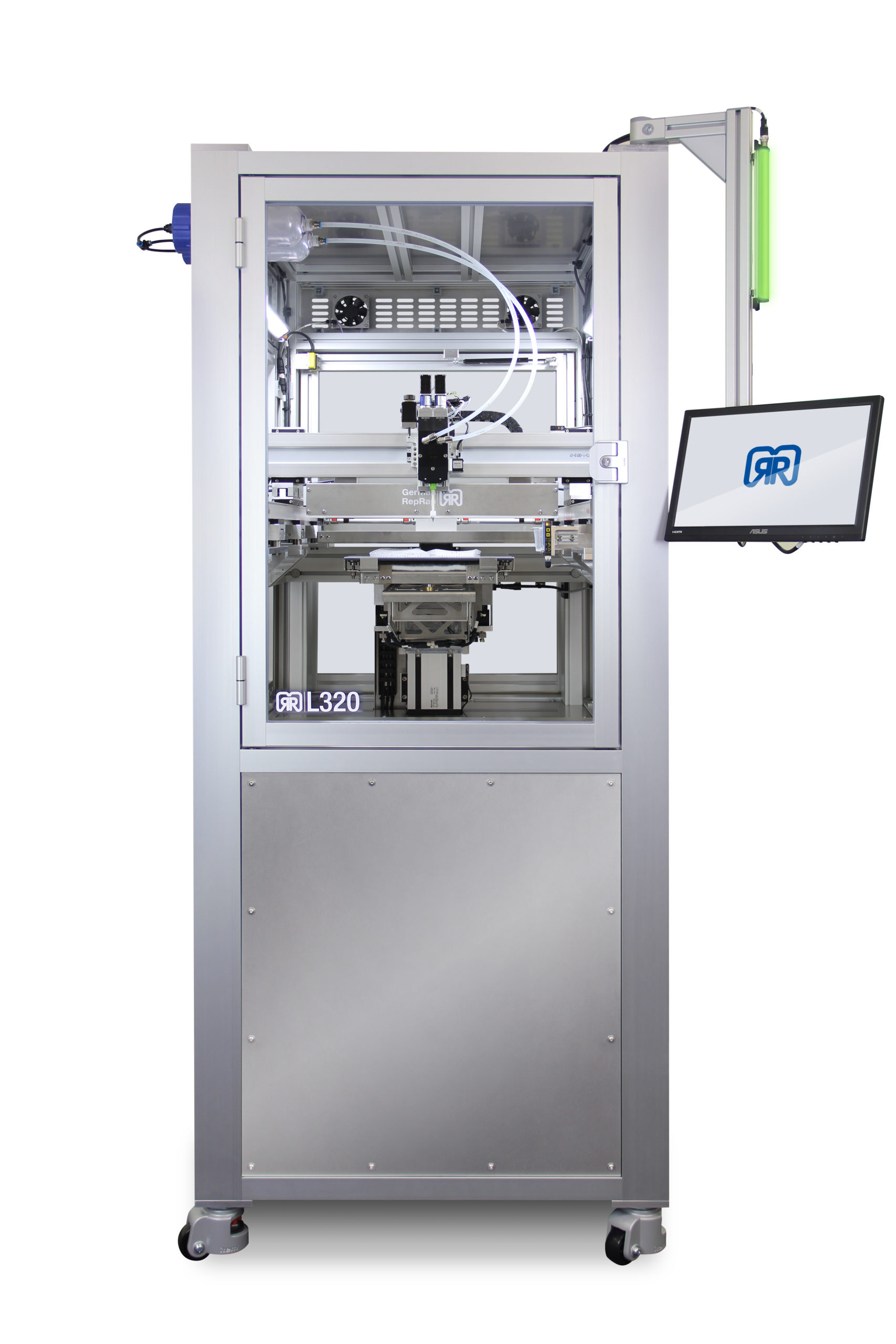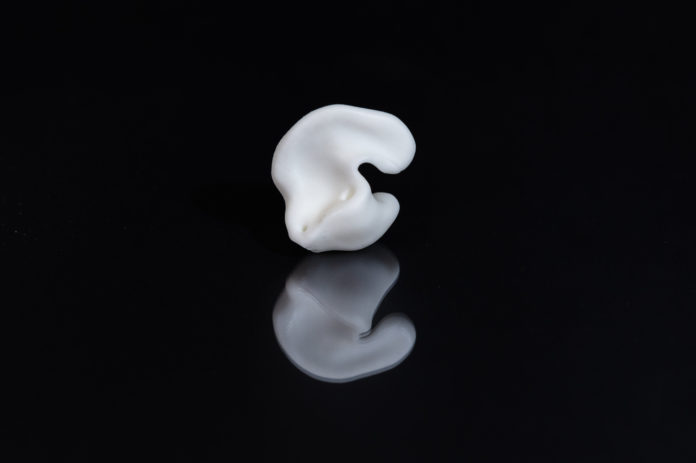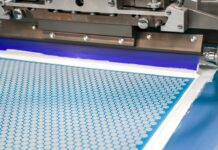So far, the production of silicone parts has always been made possible via conventional manufacturing processes such as injection molding, casting and compression molding; processes that remain expensive given the high cost of molds. With the recent developments in the field of material science, scientists have been able to explore the use of silicone as a 3D Printing material. Manufacturers have gone beyond these possibilities and have explored the development of silicone 3D printers. So, 3D Printing silicone is now possible and given the nascent interest of industrials in this technology, it is time to dive into it and discover how, why and where this technology can be leveraged.
As this segment is still nascent, there is not yet a great number of players that specialize in the field. ACEO®, German RepRap and Spectroplast AG are part of this exhaustive list and we have invited them to share their expertise in this dossier.
ACEO® is a registered trademark of Wacker Chemie, a worldwide operating company in the chemical industry. ACEO® provides 3D printing with silicone elastomers that are comparable to liquid silicone rubbers that are used for injection molding. According to ACEO®, its technology achieves the same high-performance material properties usually found in conventional manufacturing processes. Egbert Klaassen, Global Marketing Director of ACEO® will speak on behalf of the company in this article.
German RepRap is a Germany-based manufacturer of 3D printing solutions based on the RepRap technology (Fused Filament Fabrication). The company also provides 3D scanners, filament, software and accessories. Lena Wietfeld, Head of Marketing, has been able to reply to our questions for this dossier.
Spectroplast AG is a spinoff from the university ETH Zurich that specializes in Silicone additive manufacturing service leveraging 3D biocompatible and high precision silicone material. The service provider has just completed a €1.38 million seed funding round led by the Munich-based investor AM Ventures to develop its services. Petar Stefanov, co – founder & CTO, shared their expertise in the field as part of this topic.
Silicone, an “interesting” material
Interestingly, the interest in silicone as a 3D printing material is due to its material properties. However, it turns out that these same properties are also the reason why the material has never been considered as a viable option. So, what are these properties? And above all, what happened?
Silicone is a polymer that integrates repeating chains of silicon and oxygen. These polymers comprise synthetic compounds inert in nature such as siloxanes, which are made up of atoms of silicon and oxygen with carbon and hydrogen.
As mentioned earlier, the production of silicone parts was mostly achieved through conventional manufacturing processes. Indeed, it is not possible to melt silicone, as we know it, by exposing it to heat and then 3D print a part layer by layer like it is with plastics or metals. With the advancement in material science, researchers have been able to develop some exciting solutions compatible with 3D Printing.
These synthetic compounds deliver to the Silicone material semi-organic behaviour and specific properties such as biocompatibility (ideal for medical applications), chemical stability and resistance to natural ageing; thermal stability (from – 80 to + 300 °C); an ability to withstand fire without releasing toxic and irritating fumes, electrical insulation, elasticity and transparency.

Spectroplast AG’s Petar Stefanov confirms this assertion while laying emphasis on the reason why silicone is used as a 3D Printing material: “Silicone is a high-performance elastomer that exhibits many beneficial properties including biocompatibility, fatigue resistance, chemical resistance, high temperature stability etc. Conventionally, only rigid materials such as metals, plastics and ceramics are accessible by additive manufacturing while there is a growing need for soft and compliant elastomeric materials. Introducing biocompatible elastomers to the world of additive manufacturing opens doors to the next generation of customized, patient-specific healthcare products.”
As you may know, 3D printing is a technology that can process different forms of materials: resin, powder and filament. Now that silicone has joined the ranks of 3D printable materials, it should be noted that “the material begins its journey in liquid form and is selectively solidified using light.” “Highly precise light exposure gives the printed objects exceptional spatial resolution and outstanding surface finish”, explains Stefanov.
How does the 3D Printing process work?
The 3D printing process of such material varies from one company to another. Indeed, an operator or a service provider, might either use a 3D printer that can process silicone materials or a Silicone 3D printer.
According to the spokesperson from Spectroplast AG, light-based additive manufacturing technologies such as SLA and DLP deliver excellent results in terms of resolution, surface finish and mechanical performance when they process silicone materials.
However, German RepRap and ACEO® have developed their own technology to produce silicone 3D Printed parts.
The “LAM” technology from German RepRap
German RepRap has developed a Silicone 3D printer named L320. The system can build small and large objects, as well as small series and integrates a Liquid Additive Manufacturing Technology that can process liquid silicone rubber (LSR) materials. The manufacturer plans to develop other materials in the future for this technology. In the meantime, Lena Wietfeld explains below how the process works:

“[Our technology] works with a material that is not – as with the FFF printer – melted and solidified again, but is liquid, and vulcanized under heat exposure. One speaks also of a thermal full network. This means that the individual layers that the printer deposits firmly connect to each other. In this way, it is possible to produce components that have almost the same properties as injection-molded parts – (…) a clear advantage because insights from the 3D-printed prototype can be transferred directly to injection-molded serial parts.
A special halogen lamp releases activation energy to accelerate the complete cross-linking, on a molecular level, between the two components. A finely tuned action, for both small and large objects, is ensured by the travel speed of the lamp. Due to this thermal cross-linking, the printing time is considerably reduced, at the same time the printing result, especially in terms of time savings, sets new standards. In comparison to conventional production methods, such as injection molding, a time saving of 50% and more can be achieved here. In addition, Liquid Additive Manufacturing eliminates the high tooling costs, which results in great price savings.”
[This] is also very interesting for the development of new customer groups, since the process, even without an investment in tools or moulds, makes lot sizes of n = 1 possible or economical. That makes it very interesting for the bigger industries and I’m sure that this will lead to new possibilities for the additive manufacturing world.”
As far as their LSR material is concerned, unlike other manufacturers that have developed materials that would simulate silicone although it was never truly the same, Wietfeld lays emphasis on the fact German RepRap’s material is a real silicone, which is, as per her words, “thermally cross-linking”.
“The material does not contain any acrylic hardener, does not become UV-crosslinked and is almost identical to injection molding in all properties. Especially for products that require a high degree of fineness, the material is a big advantage. Companies already using this silicone can now combine the unique benefits of already used silicone with faster prototyping and small batch production of highly complex parts. The variation of different infill options of the same material, results in a wide range of possibilities, for example, for different damping properties. Depending on the mixing ratio, flexible products or even rigid printing results can be produced. This brings a decisive new possibility – away from the pure prototype process, individual parts can now be produced, in unit number 1, but with the technical requirements of injection molding quality” explains GermanRepRap’s spokesperson.

Although Wietfeld could only speak about their technology, she remains very optimistic with regards to the evolution of this new entrant into the industry, as its advantages might serve the demand in construction and electronics areas.
ACEO® Silicone 3D Printing technology
The brand of WACKER is one of the first companies that paved the way to the possibilities offered by silicone 3D Printed parts. Indeed, the prospect of using 3D printing for the fabrication of silicone parts has long posed a challenge for the industry, due in part to the high viscosity of the material.
In 2016, through its registered trademark, WACKER therefore brings to the market a technology that can create 3D objects from silicone materials without thermal changes, a variation of the Material Jetting process based on a “Drop-on-Demand” principle.

“The ACEO® technology is based on a drop-on-demand principle. The print head deposits single silicone voxels on a building platform. These voxels merge smoothly into a homogeneous surface. After each layer, the curing process is activated by UV light. (…)
Due to the high viscosity and low surface energy of silicones, the formation of droplets requires a dosing valve capable to shear and eject the material with high frequency. With this method, there is no contact between the nozzle of the valve and the 3D-printed object and consequently no string of material between nozzle and object. Equipped with several valves, the ACEO® printers can handle more than one silicone at the same time – a process we call multi-material 3D printing.
A three-dimensional object is printed layer by layer with the use of support material to create complex structures, overhangs or cavities”, declares Egbert Klaassen.
The service provider of silicone parts leverages silicone elastomers that are available from 20 to 60 Shore A, available in different colours but also translucent.
Applications and limitations
Despite silicone 3D printing is still in its infancy, tangible applications already exist.
According to German RepRap, the construction industry needs silicones for sealants, adhesives and coatings. The electronics industry on the other hand, uses silicones to protect electronic components from extreme heat, moisture, salt, corrosion and dirt. Indeed, silicones are included in computers, telephones, and LED lights.
Spectroplast AG sees a great potential of the technology for life-enhancing healthcare products such as customized prosthetics and orthodontics on the one hand, on the other hand for patient-specific medical devices such as tracheal stents and aortic heart valves. As a matter of fact, the company ambitions to develop extensive applications for this segment.
However, despite the increasing range of applications, ACEO® depicts the fact that due to the high viscosity of silicone elastomers, it is a challenge to improve the resolution which is currently ca. 0.4 mm.
Lastly, apart from the aforementioned example of German RepRap which is a manufacturer of 3D Printers, it should be noted that there is not really a wide availability of silicone filaments and resins as most 3D printers for Silicone have been developed by companies that are not machine manufacturers. Therefore, to avoid unfortunate situations, it is always wise to get further information about this material from service providers.
This dossier has originally been published in the october – november Issue of 3D Adept Mag (2019).
You can now post free of charge job opportunities in the AM Industry on 3D ADEPT Media. For further information about 3D Printing, follow us on our social networks and subscribe to our newsletter!
Would you like to be featured in the next issue of our digital magazine? Send us an email at contact@3dadept.com




